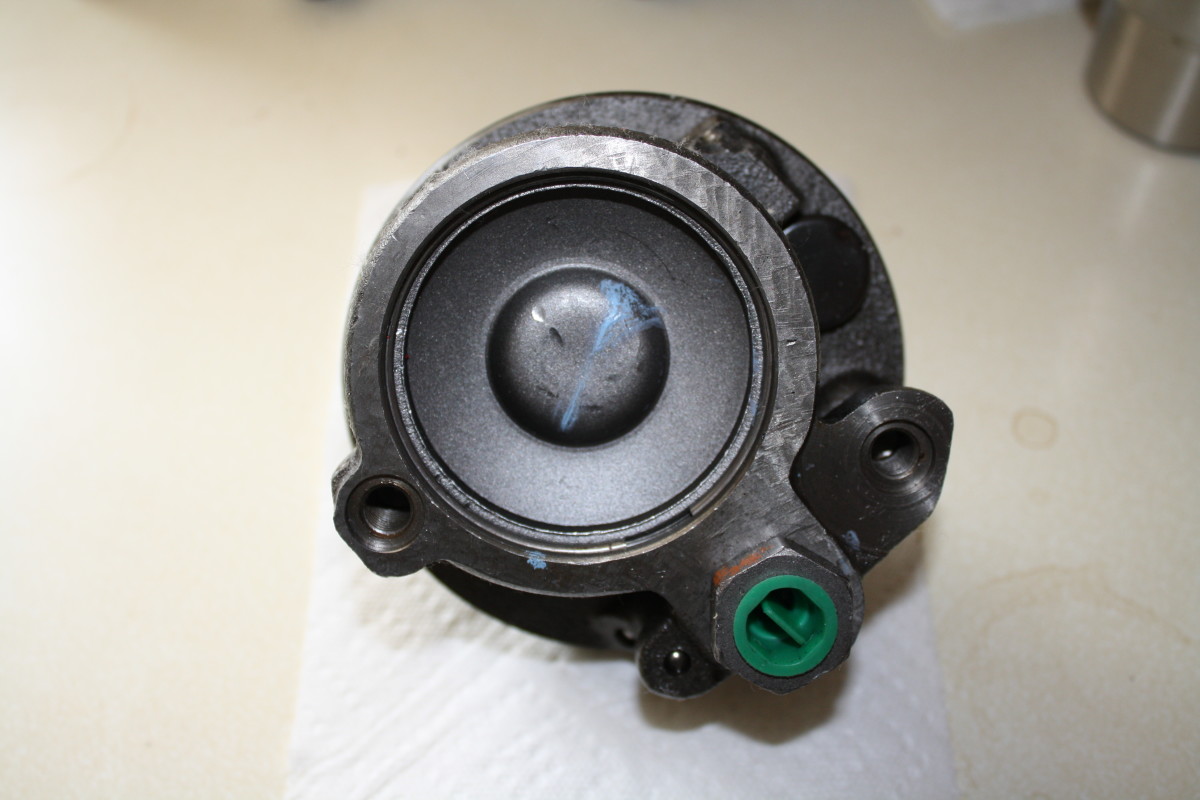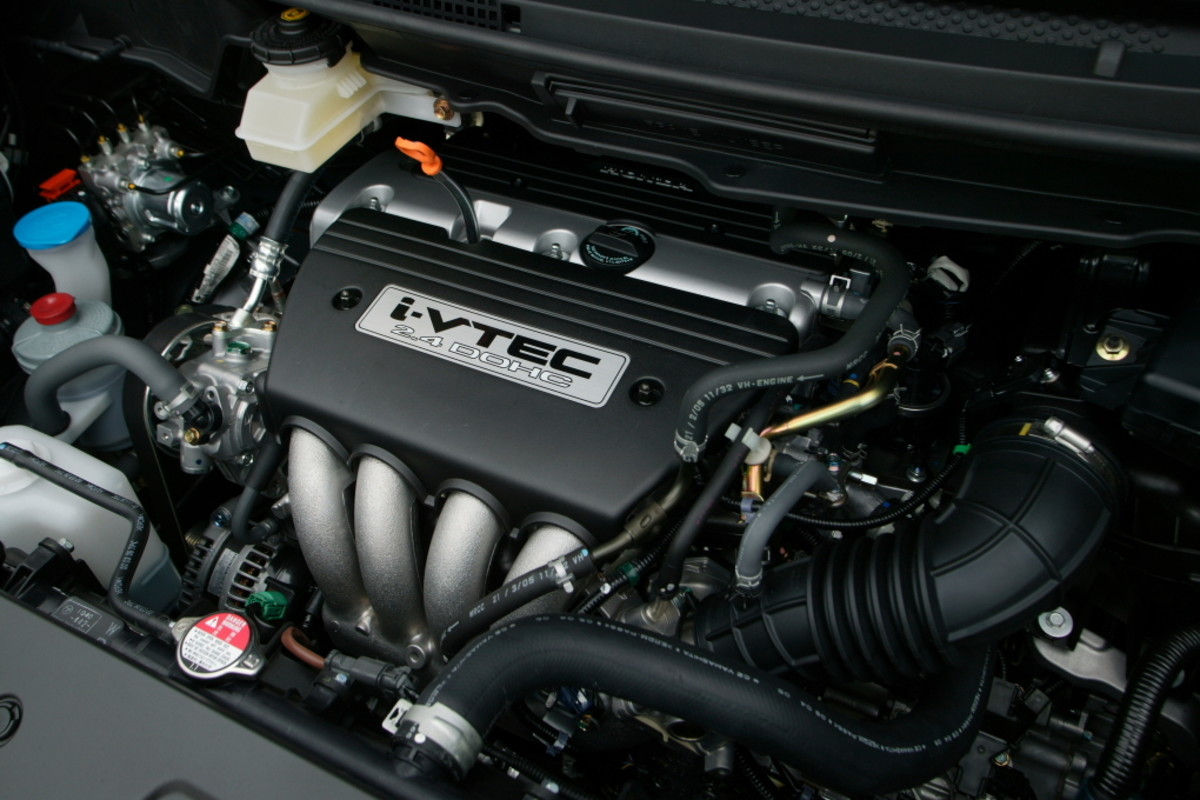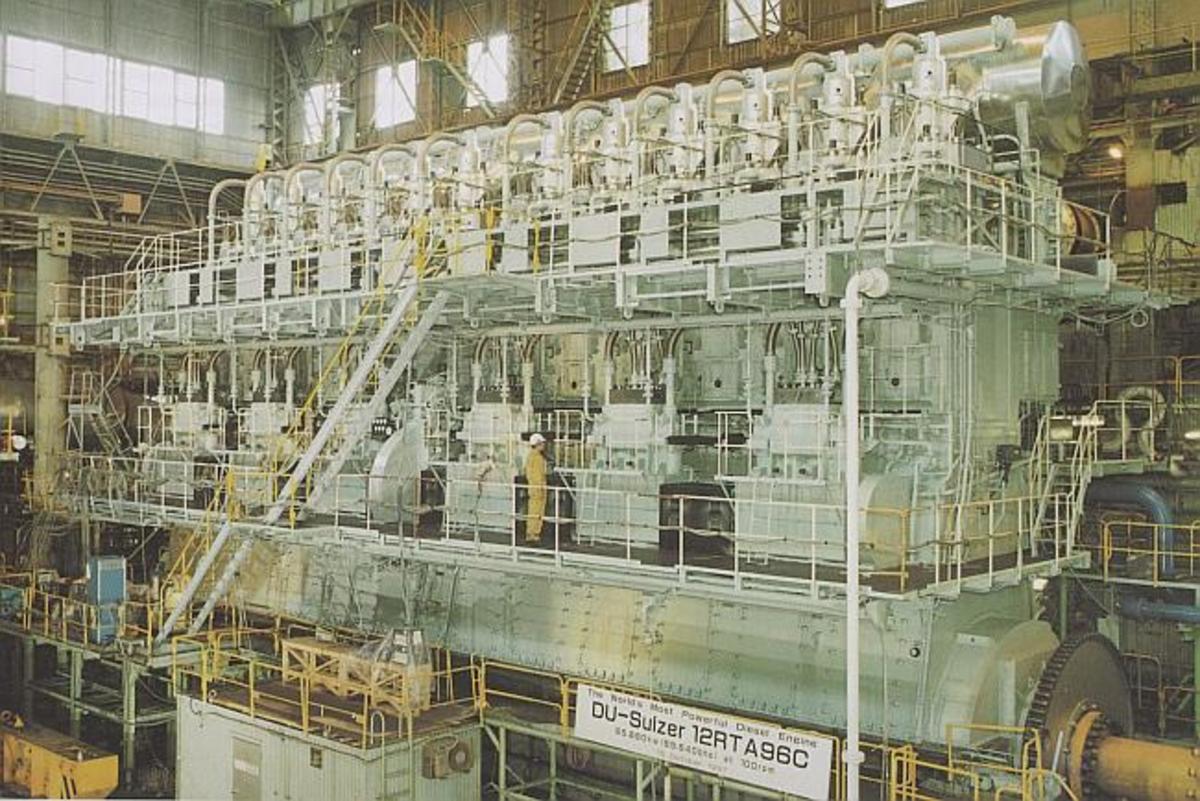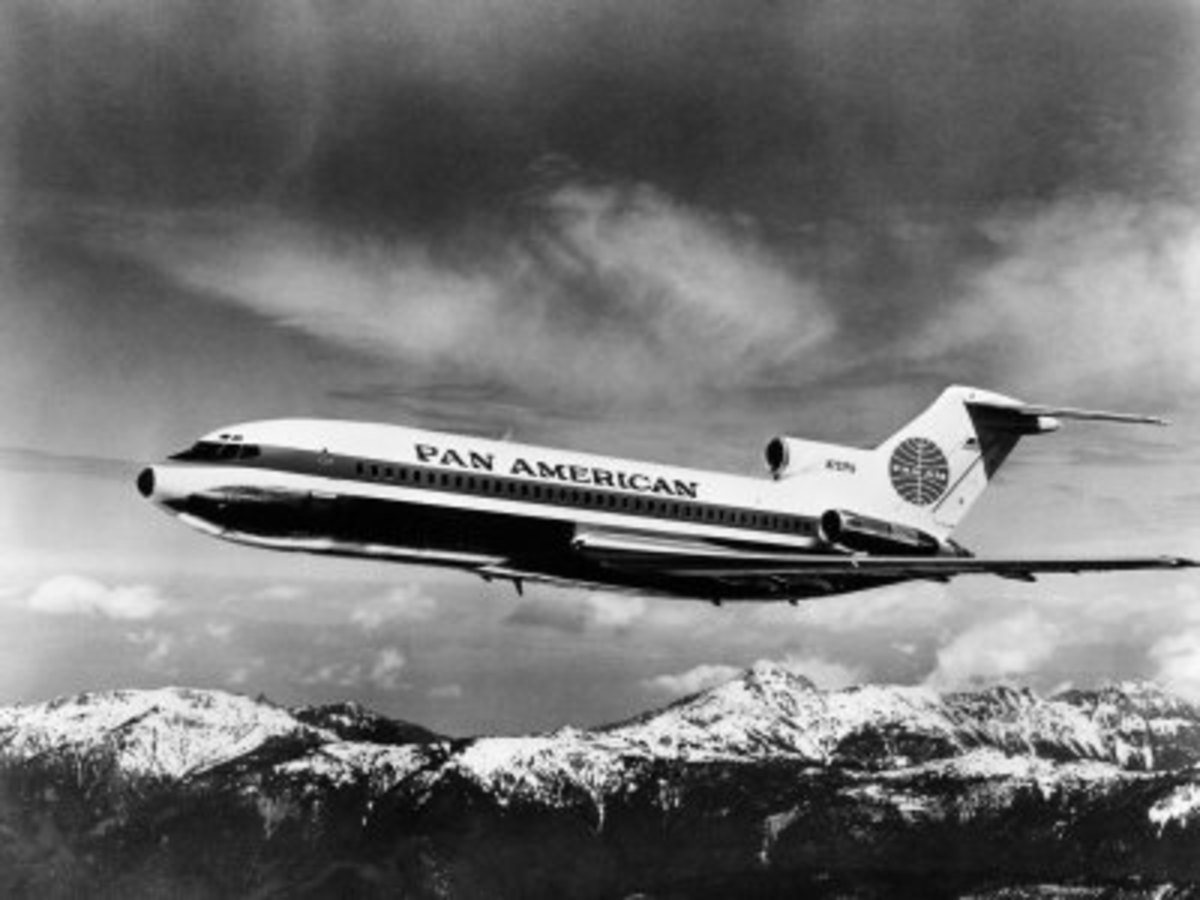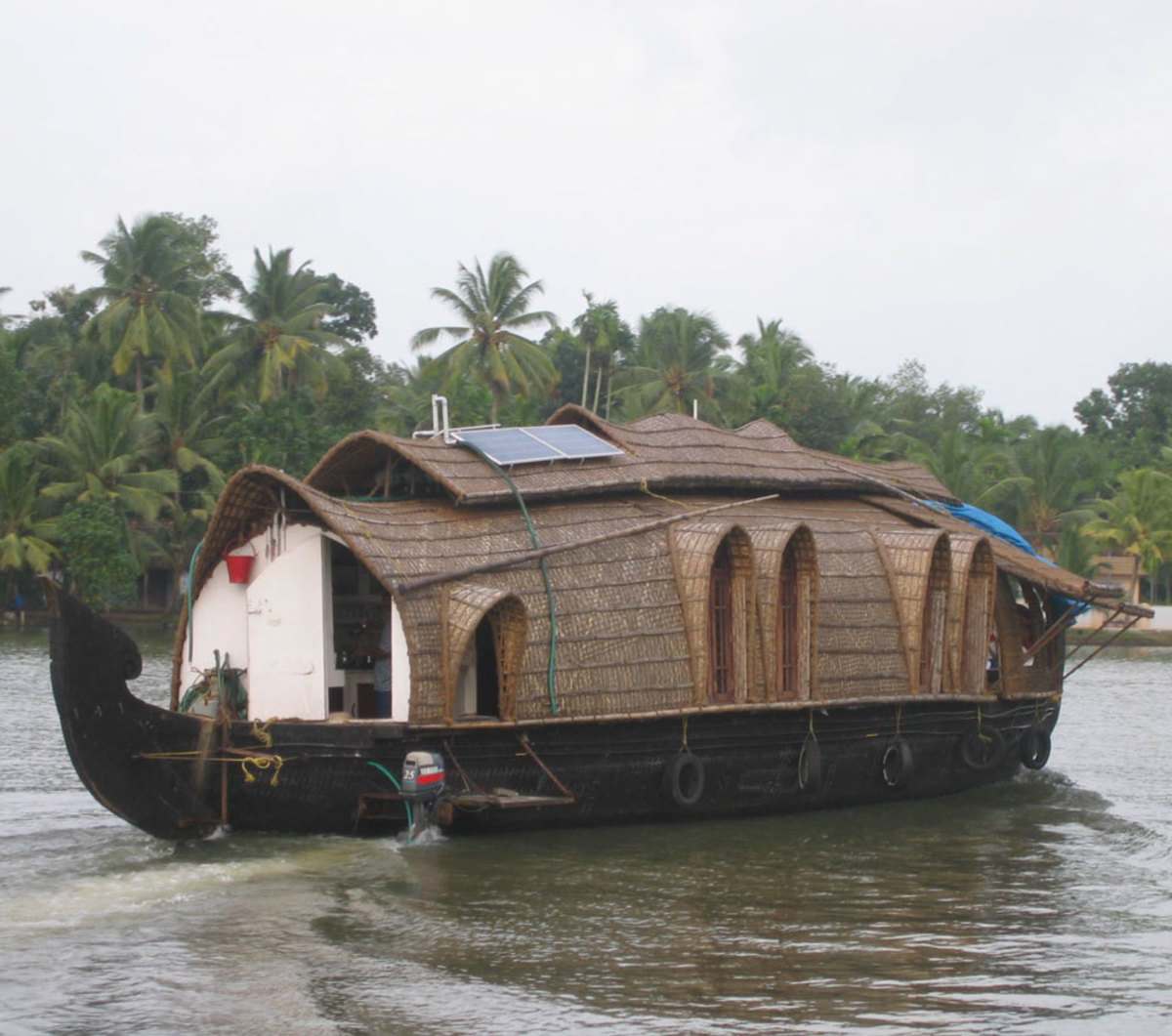Outboard Motor
An outboard motor is a removable, externally mounted propulsion system for small boats. Larger boats are usually equipped with an inboard motor, which is a permanent and integral part of the boat.
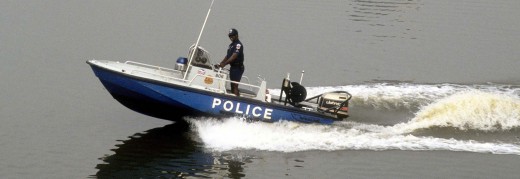
Construction
An outboard motor consists of an internal-combustion engine, a drive shaft, and a propeller housing. The motor is fastened to the stern, or transom, of the boat by clamps or bolts. Its upper unit, or power head, contains the cylinder block, with its associated components, and the cooling, ignition, and carburetion systems. Extending downward from the power head is the shaft housing, which contains the pump and water passages for the cooling system, the exhaust duct, and the drive shaft. The lower unit houses the propeller, the propeller shaft, and the reduction and the reverse gears.
Except for small models, the fuel supply is stored in separate tanks inside the boat and is connected to the power head by flexible tubing. If the motor has an electric starting system, as most of the larger and medium-sized models do, the storage batteries for the ignition system are also kept inside the boat and are connected to the power head by cables. Starting is done by turning the ignition key. Manual starting motors are started by pulling a self-rewinding cord attached to the flywheel.
The outboard motor drives the boat forward and backward, and the unit is mounted so that it can be turned to the right or the left, thereby steering the boat to either side. The mounting also features a pivot, which enables the power head to be tilted into the boat, raising the propeller out of the water.
Operation
A boat powered by an outboard motor is relatively simple to operate. The larger models feature remote controls for steering and engine control. Cables running from the engine to the driver's seat enable the operator to maneuver the boat with a steering wheel, to control the speed with a throttle lever, and to shift into forward, neutral, and reverse gears.
When operating smaller outboards, the driver sits in the stern of the boat, just forward of the motor. He turns the entire unit with a handle attached directly to the motor. The throttle is usually housed in the handle grip, as it is on a motorcycle.
Most outboard motors are lubricated by adding outboard-motor oil to the gasoline supply. The cooling system utilizes the water in which the motor is being run. The water is drawn through an intake port in the propeller housing, pumped up the shaft, circulated around the cylinder walls, pumped down the shaft, and expelled underwater with the exhaust.
Types and Uses
Most outboard motors in use are 2-cycle, water-cooled, reciprocation gasoline engines with 1 to 6 cylinders. They range in weight from about 17 to more than 250 pounds, and they produce from 1 to 110 horsepower. The average horsepower of modern outboard motors is 28.2, but models with more than 45 horsepower constitute nearly 25 percent of the market. The fishing models, ranging from 7 to 20 horsepower, are the most popular and constitute about 38 percent of all outboards sold.
Most outboard motors are used on small pleasure boats specifically designed to accommodate them. These boats, which usually range in length from 12 to 21 feet, have planning hulls and feature a reinforced transom and a motor well. Larger craft are often powered by twin outboard-engine installations. When twin motors are being used, they are clamped to the transom side by side and are linked together so that they can be operated by one steering system. However, twin installations are so arranged that when it becomes necessary the boat can be driven on only one engine.
Fishing is the most common use to which out-boards are put, and cruising is the second most popular use. Other uses include water-skiing, hunting, and such miscellaneous activities as commercial ferrying. Outboard racing is also a popular sport, and special racing craft are usually raced. Some of these special craft achieve speeds of more than 130 miles per hour.
Care and Maintenance
The manufacturer's recommendations should be followed carefully in operating an outboard motor, particularly regarding the oil-to-gasoline mixture ratio.
When storing the motor, the fuel lines should be disconnected and all fuel drained from the carburetor. If the boat is being used in salt water, the motor should be tilted out of the water when not in use and flushed off with fresh water after each use in order to prevent corrosion. The engine should never be run without the shroud, or engine cowling, because water may foul the spark plugs or damage component parts. Spark plugs should be cleaned or replaced at regular intervals. The entire engine should have a tune-up at least once a year.
Precautions
The correct mounting of the motor is highly important to ensure safety and maximum performance. The motor should be mounted squarely on the center of the transom, and the stern bracket clamps and bolts should be tightened securely. To prevent loss of the motor overboard, a safety chain should be used to secure the motor to some permanent part of the boat or a bicycle padlock should be placed through holes in the clamp handles. When in operating position, the propeller should be perpendicular to the surface of the water. To prevent damage to the propeller and lower unit when beaching the boat or when operating it in extremely shallow water, it is advisable to tilt the motor out of the water and to continue by coasting.
Inexperienced outboarders should remember that, unlike an automobile, an outboard boat turns from the rear, not from the front. Therefore, the operator of an outboard must allow sufficient space for the stern swing, especially when leaving a dock or pier. The boat should be pushed off from the pier or run at a slight angle away from it until there is enough room for the operator to swing the stern over in a tight turn.
When fueling an outboard, it is important to keep the pump nozzle in contact with the tank fill pipe to prevent a spark of static electricity that could cause an explosion. Portable fuel tanks should be removed from the boat and filled on the dock. All gasoline spillage should be immediately wiped up.
The motor should always be properly matched to the size of the boat. Too large a motor on a small boat is highly dangerous. A motor that is too small for a boat will not perform satisfactorily and could prove dangerous in rough weather. Most boats now being manufactured carry a tag listing the maximum horsepower the boat is designed to accommodate. These standards are set by the Outboard Boating Club of America and are determined by a formula derived from extensive tests using all sorts of hull shapes and designs.
History
The first outboard motor produced in the United States was manufactured by the American Motor Company in 1896. Only about 25 of these motors were produced, in a. 1-horsepower and 2-horse-power model. These engines were air-cooled, single-cylinder, 4-cycle motors, the 1-horsepower model weighing 50 pounds and the 2-horsepower model weighing 75 pounds.
The first commercially successful outboard motor was patented by Cameron B. Waterman in 1905. It used a motorcycle engine with a chain drive to the propeller. Waterman built 25 of these air-cooled, single-cylinder engines in 1906, but in the next year he replaced the air cooling with a water-cooled system. Production for that year rose to 3,000 motors. By 1915 he had continued to improve his product and had built and sold about 30,000 outboard motors.
The most successful pioneer in the outboard motor field was Ole Evinrude. He began to produce motors in 1911, sold his company in 1914, and reentered the field in 1921. Before that time all outboard motors were made of cast iron and had a very high weight-to-horsepower ratio. Evinrude pioneered the use of aluminum, and his 2-cylinder engine produced 2Vfc horsepower and weighed only 47 pounds. In 1928 he introduced the first 4-cylinder, 2-cycle outboard motor designed primarily for racing.
By 1929 about 60,000 outboard motors were being produced annually in the United States. Production fell rapidly during the Great Depression, however, reaching an all-time low of 12,000 in 1932. World War II stopped all civilian production of outboards, but many technical and mechanical refinements were put in use during the war for motors for military use.
After the war, civilian production of outboard motors leaped to 584,000 in 1947. Production continued to rise until 1956, when 642,000 were sold. Since that time, production has been stabilized at about 400,000 units per year. There are now about 7,000,000 outboard motors in use in the United States.

